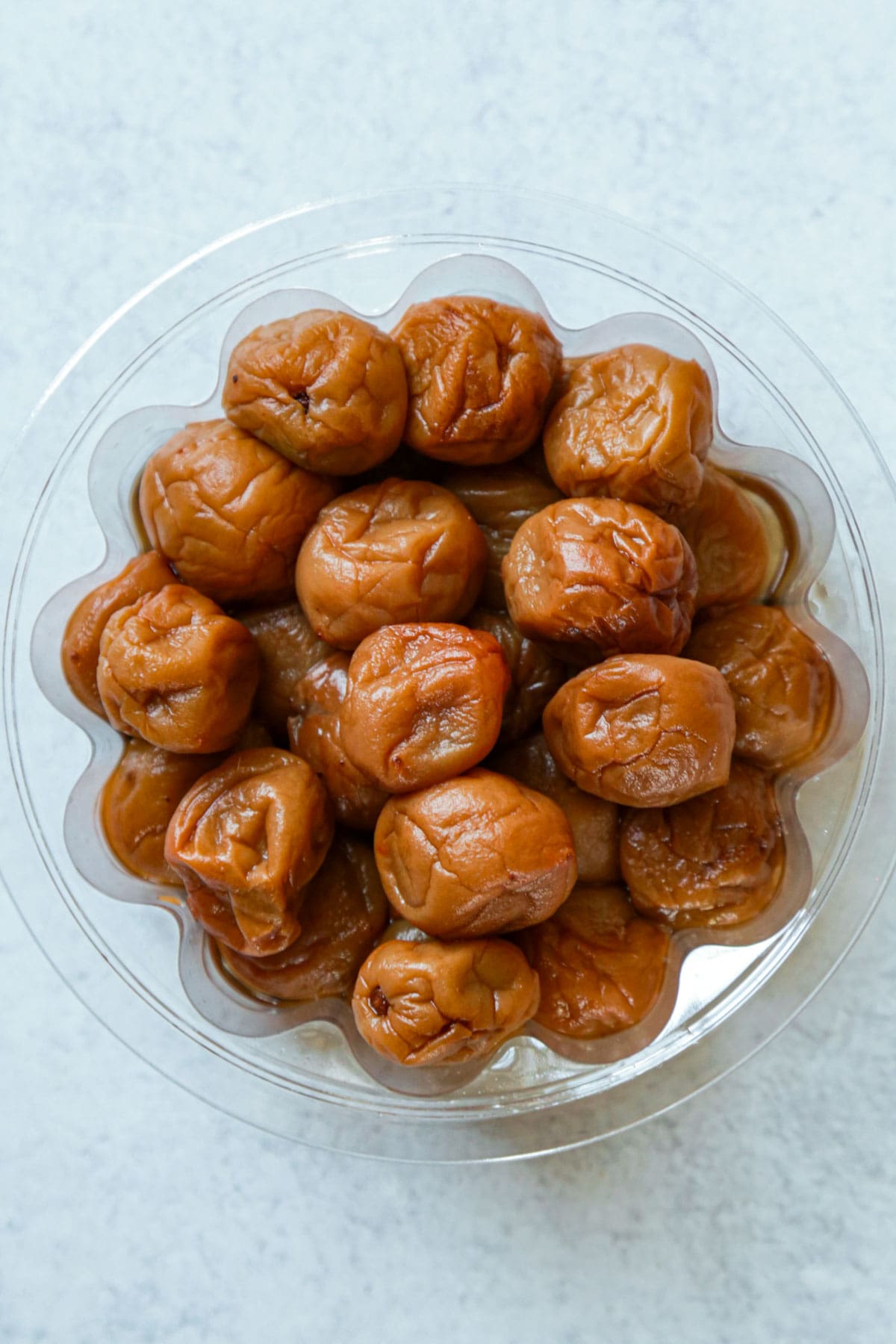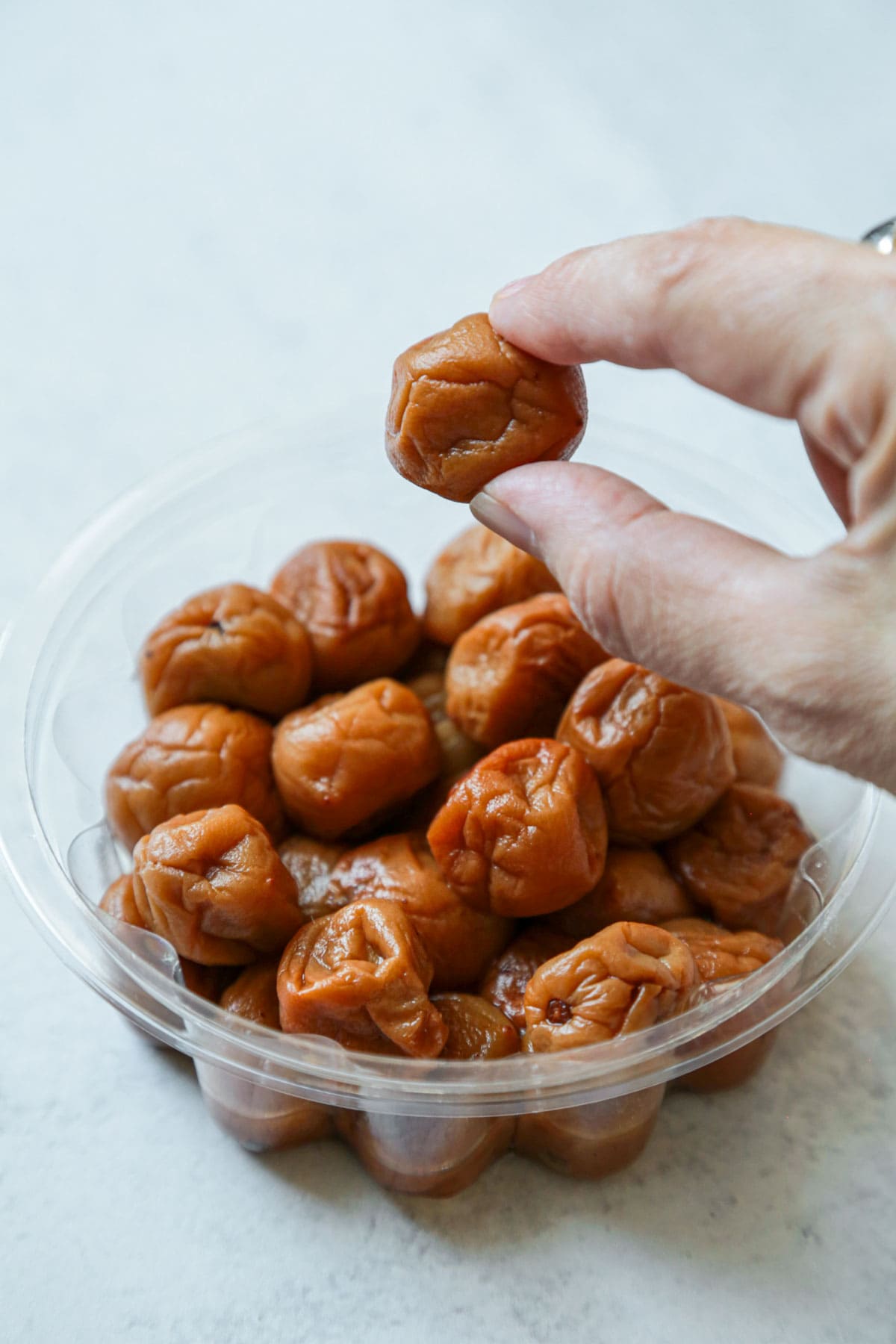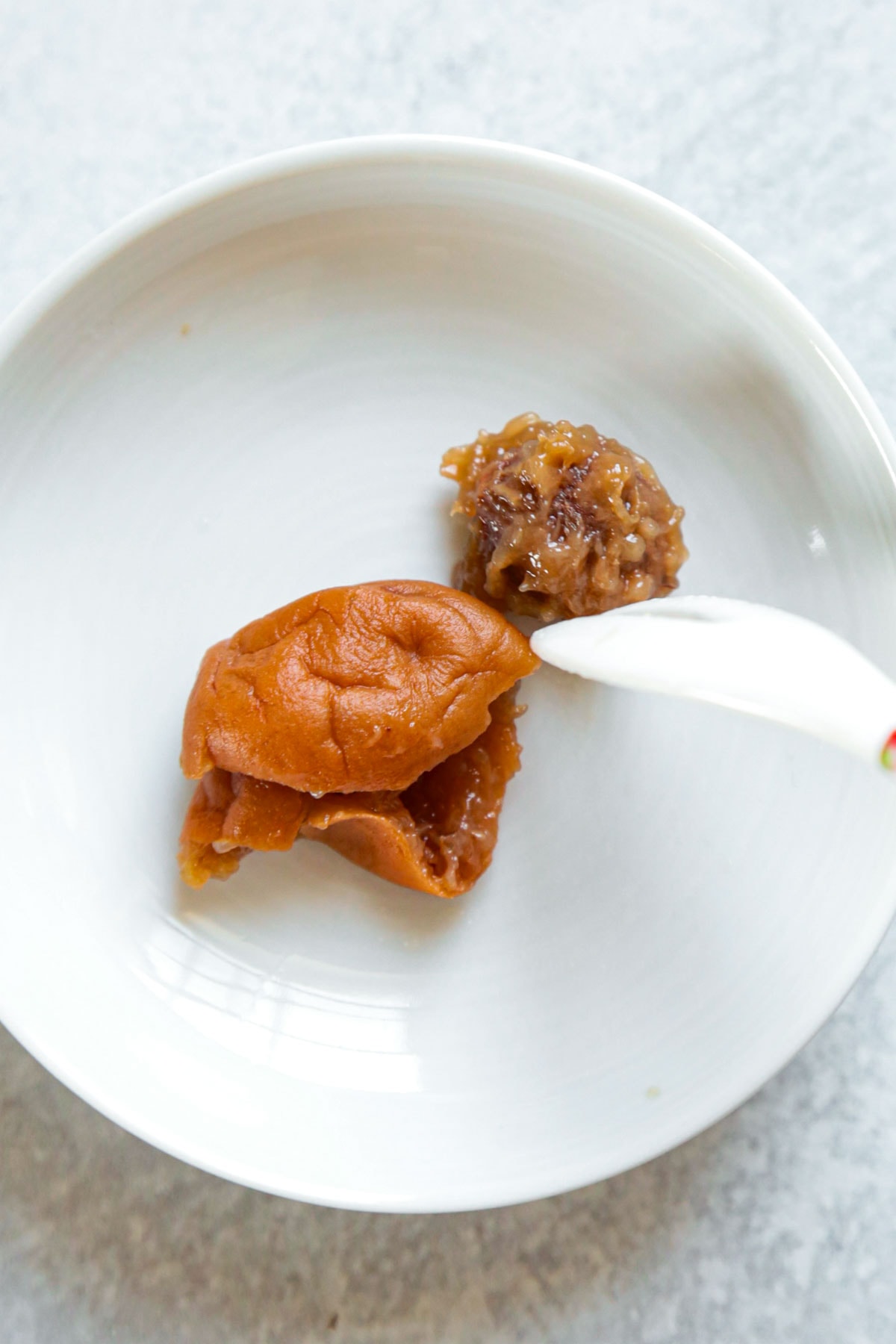
Table of contents
What Is Umeboshi?
Umeboshi, also known as pickled plum, is a Japanese preserved plum that’s most often served as tsukemono, which is a pickled or fermented food served as a side to rice. While Japanese ume comes from the genus prunus family of fruit bearing trees, it’s actually closer to an apricot than a plum.
The fermentation process varies depending on the type of pickled plum made. Generally, Japanese ume are picked from trees, coated in a salt mixture, and placed in a barrel for fermentation. During that process, the natural juices are pulled out of the plums to create vinegar. From this point, various ingredients are added to produce different varieties.
Umeboshi can be sour, tangy, salty, or have a slight honey flavor. They come in different sizes from small, smooth, and crunchy, to larger, soft, and wrinkled. In Japan there are several types of pickled plums, resulting in many different texture and flavor profiles.

How To Use Umeboshi
Umeboshi can be eaten on its own, minus the pit in the center, as part of a traditional Japanese meal, or it can be used as a filling to Japanese rice balls (onigiri). It can also be found in the form of a paste and used as part of a marinade for meats and vegetables, or as a spread. Lastly, it’s used to flavor condiments such as vinegars, salts, and furikake.
Here are some recipes using umeboshi:
There are several different types of pickled plums available in Japan and each one is tasty in its own way. Some of the more popular ones are:
- Shiraboshi Umeboshi – This is probably the most standard type of umeboshi. The fermentation is rather traditional, using salt to create that signature salty and sour taste.
- Shiso-zuke Umeboshi – This variety is known for its red color and pungent scent. The plums are pickled with shiso leaves, which are also included in the final product.
- Usushiojitate Hachimitsu Umeboshi – This variety is on the sweeter side and has a mellow and less salty taste. The plums are pickled in a lower salt concentration, and flavored with honey, creating a more subtle taste. It’s my personal favorite type of umeboshi.
- Kombu Umeboshi – Kombu and salt team up to create this variety of pickled plum. Kelp and mirin also appear in the mixture as well, making it a true umami bomb.

Storage
Because of the fermentation process, umeboshi is considered a “well-preserved” food and is shelf-stable. It is best to store umeboshi in a cool, dry place, as direct sunlight will spoil the pickled plums. If possible, keep them in an earthenware pot or kame. The ceramic pot will be the best container to keep the umeboshi, as metal and plastic may erode.
Substitutes For Pickled Plums
Umeboshi has such a unique taste that finding a one-to-one substitute can be very difficult, if not impossible. Look for ingredients that share a salty, fruity, and tangy flavor profile. Rice vinegar or apple cider vinegar will produce a similar flavor, but keep in mind that neither of them will provide the pungent and citric acid flavors that only fermented foods possess.
Frequently Asked Questions
If you find the salt to be too much in umeboshi or are trying to reduce the salt in your diet, soak the pickled plums in a bowl of water for about half a day. During this process, the umeboshi will release some of the salt that was incorporated during the fermentation process.
Yes it is safe. They do not impact the taste or freshness of the pickled plums.















